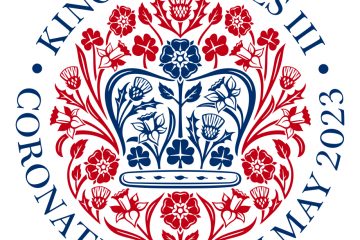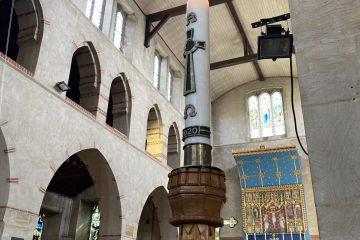‘From this day forward all generations will call me blessed, for the Almighty has done
The Assumption of the Blessed Virgin Mary, which we celebrate on 15th August, is a feast which, for Anglicans, can be controversial. It could even be seen as a shibboleth – one of those doctrinal markers which indicates whether a person is a ‘proper’ Anglo-Catholic, as opposed to, say, a middle-of-the-road, or even reasonably ‘high’ Anglican. Certainly, it’s not a feast I would expect to be celebrated at my local Cathedral in Derby – as far as I can remember, they don’t mark August 15th at all, but choose instead to honour Our Lady on September 8th, her birthday.
The doctrine of the Assumption was ‘defined’ for Catholics in 1950, in an Apostolic Letter issued by Pope Pius XII entitled Munificentissimus Deus (The Most Bountiful God). The Letter – easily available on the internet and in paper copy, and well worth a read for anyone with a devotion to Our Lady, or an interest in such devotion – includes a brief statement of what the Assumption means:
‘…the Immaculate Mother of God, the ever Virgin Mary, having completed the course of her earthly life, was assumed body and soul into heavenly glory.’ (§44)
Some object to this teaching, on the grounds that it’s not to be found in the Bible. But then, the doctrine that God is a Trinity isn’t explicitly taught in the Bible either, but is nonetheless universally recognised as one of the central tenets of Christianity. And while some would then argue that, unlike the doctrine of the Trinity – which was formulated in the early years of the Church – the Assumption has been taught for less than 100 years, this is not the whole truth. For, while it was indeed only in the last century that the doctrine was declared an obligatory belief for Catholics, as Munificentissimus Deus explains, the belief that Mary had, after her death, been assumed bodily into heaven was in fact held by many Christians for centuries beforehand, in both Western and Eastern Churches.
The reasons given for that, almost instinctive, belief are various. Pius XII himself speaks of it as a result of Mary’s Immaculate Conception, but, as that was only declared dogma in 1854, there are plenty of other explanations too. While some link the Assumption with Mary’s virginity, Francis de Sales saw it as an act of filial piety (‘What son would not bring his mother back to life and would not bring her into paradise after her death if he could?’) while Bernadine of Sienna, with proto-feminist zeal, declared it both reasonable and fitting that if a man’s soul and body had obtained heavenly glory, a woman’s soul and body should have too.
At the heart of the doctrine, however, is simply belief in the Resurrection, which makes the controversy the teaching has caused very sad. We all believe – or should believe – in the bodily Resurrection of Christ. Jesus died, and then came back to life, not as some disembodied spirit, but with a body. It is, to be sure, a body that surpasses all our expectations of what a human body is like – it’s not bound by the limits of time or space that ours are, and it’s glorious, it can’t be harmed or decay. And yet, it is, at the same time, somehow the same body he had on earth, for the wounds of the cross are clearly visible upon it, and his tomb is empty. In other words, after his death and burial, his earthly body was taken up, and transformed into a body that can experience fully the life of heaven.
So Jesus himself is in heaven, in body and soul. That is the result of his Resurrection. But such life after death, such glory, isn’t just for him. Through his merits, through God’s love and mercy, we too can share in it – that is what his saving work has achieved for us. So, after our deaths we too will receive resurrection bodies; as St Paul says, Christ will change our lowly body to be like his glorious body (Philippians 3:21). And this teaching is, like the Resurrection of Christ himself, a basic tenet of our faith, and one that we affirm every time we say the Creed.
There’s a difference, though, between our resurrection and his. For while he has already been resurrected bodily, on that first Easter morning, we, regardless of when we die, won’t get our resurrection bodies until the end of the world. Of course, Christians of different traditions hold different views as to exactly what happens when we die, whether souls go immediately to God, or whether there might first need to be some intermediate time of purification before a soul can enter heaven. But either way, it is the soul and not the body that we believe lives on immediately after death. The dead will only receive back their bodies when Christ comes again in glory at the end of time.
The Assumption makes Mary the one exception to this rule. While the rest of the dead wait for their souls to be reunited with their bodies, Mary, like Jesus, already has her glorified body in heaven. She can thus already enjoy the resurrection life in all its fullness, living for ever in God’s presence.
While some remain sceptical that this could be so, the belief is by no means unreasonable. Mary did, in her willingness to be the mother of Jesus, play a unique part in our salvation – her obedience to God at so important a moment is undeniable. As Jesus’ mother, she was closer to him than anyone else could be, her very body formed his body. And if Jesus’ human body is now glorified in heaven, then why not also the body from which that body came?
The Assumption, by showing us the glory given to the peasant girl from Nazareth, offers a wonderful testimony to the glory that awaits us too at the end of time. Her bodily presence in heaven anticipates our own. The Almighty has indeed done great things for her; and he will, in the fullness of time, do great things for us too.
Mthr Imogen Black
Priest of Somercotes in the Diocese of Derby and Deanery Missioner



0 Comments